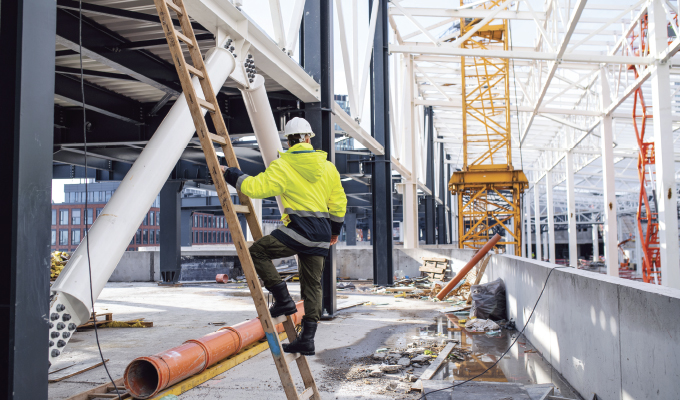Ken Wengert, vice president of risk control for Travelers Construction, Energy and Marine Risk Control teams, shares about safety concerns in 2023 through an expert Q&A.
MCS: What are some of the top safety concerns for contractors in 2023?
WENGERT: A safe construction site starts with a strong safety culture that values planning, communication and the safety of the workforce. So, at the risk of sounding repetitive from previous years, worker and jobsite safety continue to be top concerns for contractors in 2023. As part of this, it’s important to identify who might be at greatest risk for injury so proper steps can be taken.
The Travelers 2022 Injury Impact Report, which was a review of our workers’ compensation data over a 5-year period, showed almost half of all construction workers’ compensation claims happened within the first year of a worker’s time on the job. This research also showed that construction workers, on average, missed 98 days of work after an injury—the most workdays of any industry we analyzed.
MCS: With construction spending projected to increase in parts of the U.S., we may see even more new workers entering the industry. What are some tips for contractors training new employees? Why is proper training so important?
WENGERT: Safety training is an ongoing process, and it can begin before a worker arrives on a jobsite. Standard one-day orientation presentations can be expanded to provide site-specific training, such as training on the types and locations of hazards that may be encountered and guidelines on personal protective equipment that will be used. And, contractors can also pair new employees with a mentor, providing an opportunity for an experienced tradesperson to lead by example by reinforcing the importance of quality work and following established safety protocols.
Also, proper training for new employees doesn’t stop at preventive measures. Helping supervisors and workers understand what to do when an injury does occur is critical. Employees at any level in the organization who are afraid that they’ll be met with negativity after being injured may be less likely to report incidents. This situation can lead to a decrease in productivity and potentially put other people on the job site at risk. Sharing information about how an injured worker will be supported in their recovery and return can remove this hesitancy and may also have a positive ripple effect since employees who feel supported and enthusiastic about their work can attract more talent.
MCS: During winter months, some construction workers may face unique risks. What are some of the most common risks during winter months? How can contractors work to mitigate those risks?
WENGERT: The Injury Impact Report I referenced found that slips, trips and falls are the most frequent type of injury that construction workers face. When temperatures dip, there’s the potential for ice, which increases the risk of a fall. Cold weather challenges including freezing temperatures can also lead to frostbite, hypothermia and greater exposure risks for workers.
This makes thinking ahead and creating a site-specific snow and ice removal plan important. Be sure that workers are dressed in breathable layers and that gloves and boots are durable and waterproof but don’t restrict movement and equipment use. Keep in mind that sources of power or heat on the jobsite require proper ventilation and can be included in a snow removal plan to help ensure safe storage and easy access.
CLOSING THOUGHT
There’s also a wide range of technology solutions that can help contractors mitigate and manage risks, including wearables, robotics, sensors and augmented and virtual reality (AR/VR). Keep in mind that contractors don’t have to go it alone when evaluating technology. They can tap into their peer network and speak with technology suppliers. They can also reach out to their insurance providers for input. In fact, we have the Travelers Innovation Network for Construction, which is an online platform with industry-specific solutions that are vetted by our team of construction specialists. Our goal is to help our customers make a more informed decision that will meet their productivity, safety and risk management needs.
About the Author:

Ken Wengert, vice president of risk control, leads the Travelers Construction, Energy and Marine Risk Control teams. He is a Board Certified Safety Professional, serves as Chapter President of the American Society of Safety Professionals and is celebrating his 10th year as a Military Mentor through American Corporate Partners.
Modern Contractor Solutions, February 2023
Did you enjoy this article?
Subscribe to the FREE Digital Edition of Modern Contractor Solutions magazine.



